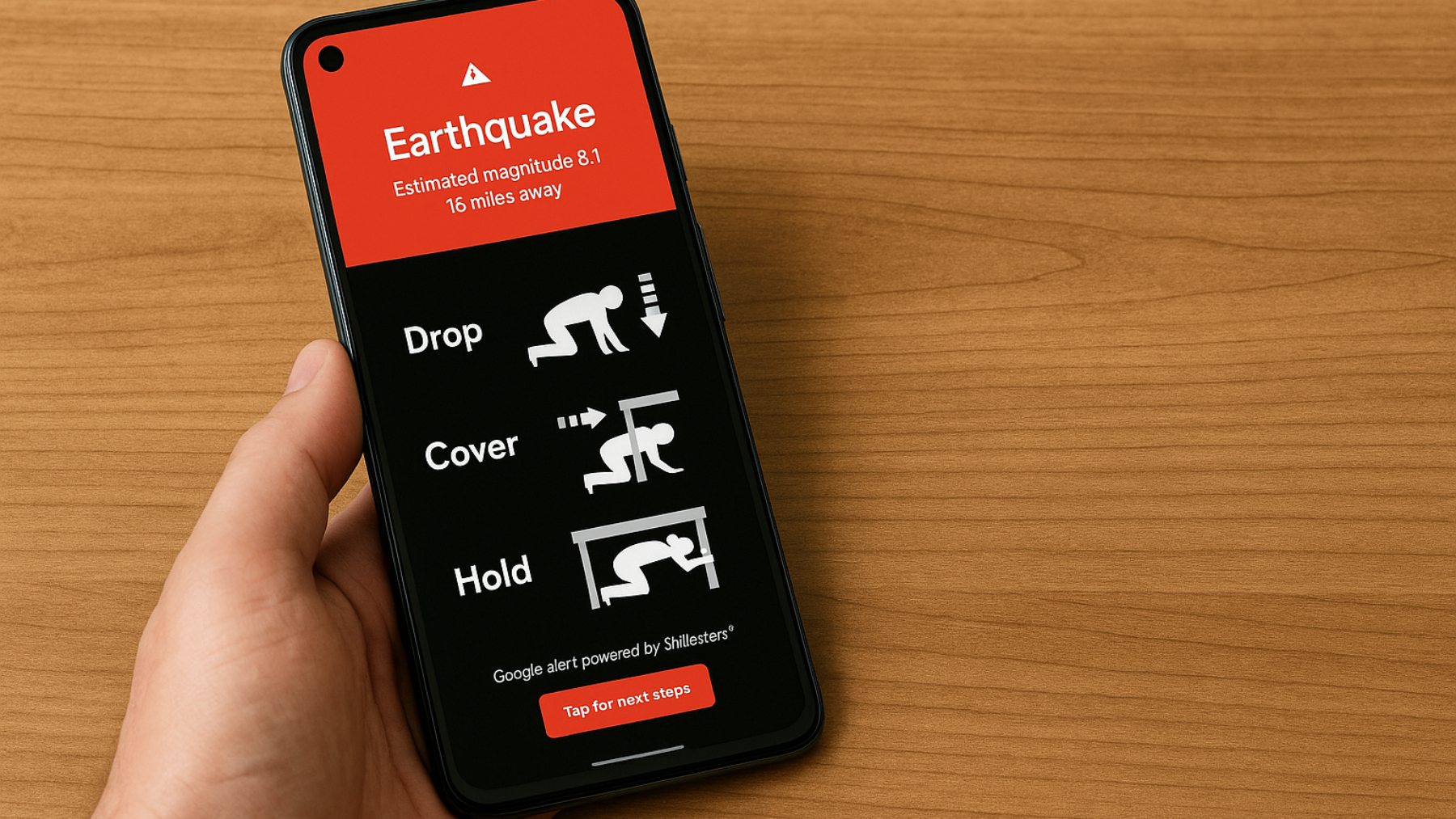Natural disasters such as earthquakes tend to arrive unannounced, but your phone can now give you precious seconds to act. Google’s Android Earthquake Alerts System (AEA) turns billions of handsets into a crowdsourced sensor network that can detect shaking and warn people before the stronger waves arrive.
In the West Coast U.S., it also relays alerts from the USGS ShakeAlert network, letting software do what no human can: outrun seismic waves with data.
How the phone‑based detection works
Outside California, Oregon and Washington, AEA listens for abrupt motion on idle Android phones. When many nearby devices register the same pattern, Google’s servers triangulate the source, estimate magnitude and location, and—if the forecast shaking crosses a threshold—push an alert to people near the epicenter.
The same system also powers “earthquake near me” information in Search. To receive alerts, you need connectivity plus Android Earthquake Alerts and Location enabled in settings. It’s a clever swap of hardware you already own for a global early‑warning net.
The alerts you’ll see.
Android uses two messages:
- Be Aware is a gentle nudge for expected light shaking (MMI 3–4); it respects your volume and Do Not Disturb settings.
- Take Action is the urgent one for MMI 5+—it blasts a loud tone, lights the screen and fills it with simple instructions like “Drop, Cover, and Hold On.”
Both target quakes of magnitude 4.5+, so you aren’t spammed for tiny rumbles. In short: the phone that helps you text can also coach you through the first seconds of earthquakes.
How many seconds you get
The new Science analysis shows the system detected an average of 312 quakes/month from M 1.9 to M 7.8, delivering alerts in 98 countries and issuing roughly 18 million alerts/month—evidence that at scale, the method works. In the Philippines (M 6.7, Nov 17, 2023), millions got warnings—up to ~60 seconds for those far from the epicenter. In Nepal (Nov 3, 2023), people received 10–60 seconds depending on distance. Those slices of time are enough to move away from glass, step off a ladder, or duck under a desk before earthquakes unleash their worst.
Crowdsourced tech is only useful if people respond. In a dataset of roughly 1.5 million survey responses, a large majority said the alerts helped them act, and many reported receiving the warning before they felt the ground move. That’s the point: alerts traveling at network speed beating seismic waves gives ordinary people a head start against earthquakes.
No system can predict earthquakes days or hours ahead, and blind zones close to the epicenter remain a challenge because shaking arrives too fast. AEA also depends on connectivity and user settings; if Location or alerts are off, your phone can’t help. And algorithms improve through experience—big events in complex geology can still stump first estimates—so engineers keep refining magnitude and intensity models as more earthquakes roll in. Even so, the false‑alert rate reported so far is low, and the global coverage is unprecedented.
Why it matters for the U.S.
Here, AEA plugs into ShakeAlert, a dense network of USGS‑managed seismometers across the West Coast, so your phone benefits from both traditional instrumentation and the handset network. That hybrid approach is extending to more devices, including Wear OS watches, so alerts can reach you even when your phone is in a bag.
The more people who can act in those first seconds, the more earthquakes become manageable rather than paralyzing shocks.
Billions of phones already in our pockets now double as the world’s largest early‑warning system for natural disasters. It doesn’t stop tectonic plates, but it buys time —often all the time you need— to protect yourself and the closest people around you.
